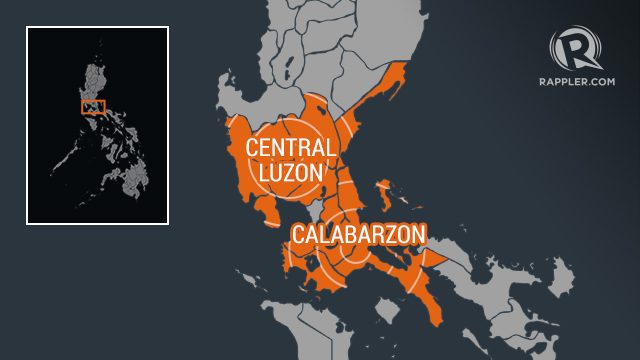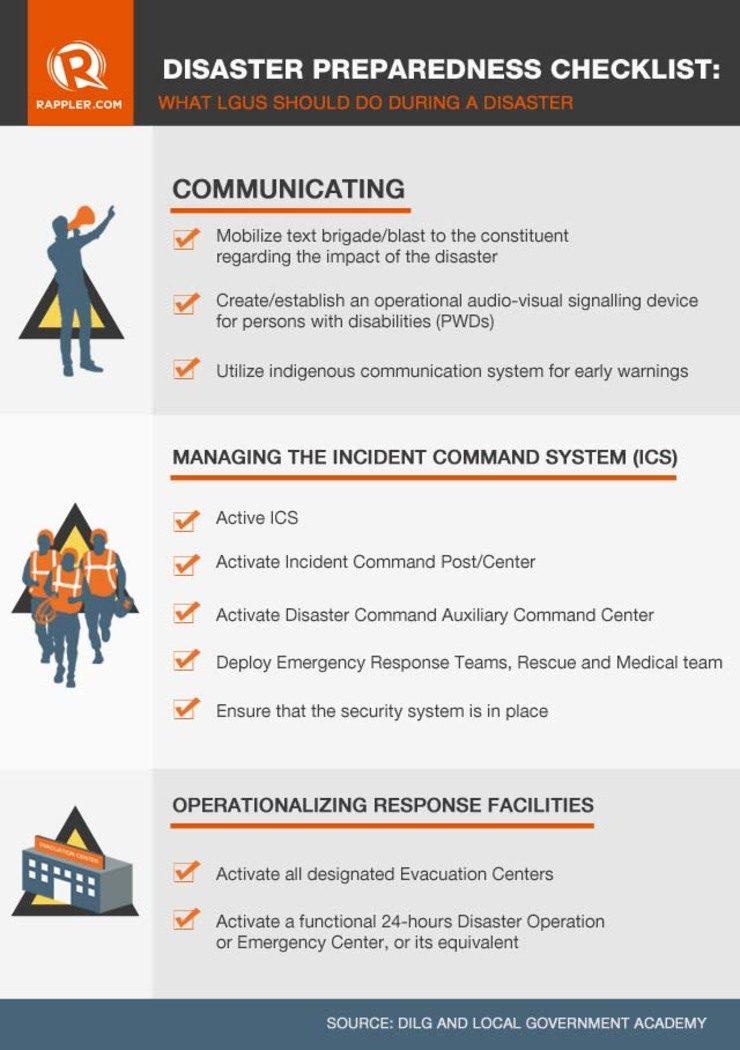SUMMARY
This is AI generated summarization, which may have errors. For context, always refer to the full article.

MANILA, Philippines — We are prepared.
Regional offices III and IV of the Civil Defense Office (OCD) told Rappler on Thursday, April 2, they are ready for Typhoon Chedeng (Maysak).
The typhoon is expected to make landfall between late Saturday or early Sunday, in Aurora, Quezon, or Isabela provinces in the middle of Holy Week festivities all over the country.
Both regions said their local government units (LGUs) and local Disaster Risk Reduction and Management (DRRM) councils are already activated. (READ: Role of LGUs, local councils during disasters)
“The first thing we ask LGUs to do is to activate their DRRM center. They’re prepared even if it’s the Holy Week,” said Vicente Tomazar, OCD Region IV-A Director. As of posting, the region’s DRRM centers are on alert, with half of their personnel on standby status, Tomazar explained, but as the typhoon nears, 100% of personnel will be tapped.
The councils are in charge of preparing and evaluating the area’s resources such as communication facilities, generators, relief goods, medicine, evacuation plans, rescue equipment, and rescue teams. Region IV-A is currenly monitoring Infanta, Quezon.
Meanwhile, Region III is equally prepared, said OCD regional director Josefina Timoteo.
“Yesterday, we did PDRA or Pre-Disaster Risk Assessment with the NDRRMC and PAGASA. They explained the possible scenarios brought about by the typhoon,” Timoteo explained. “We made contingency plans, ensured LGUs and local government agencies are ready.”
Warnings were also given to local fisherfolk.
All these lessons were lifted from Oplan Listo, a program of the Department of the Interior and Local Government which educates LGUs on DRRM.
The program provides manuals, checklists, and alert systems on typhoon preparedness and response for local officials, police, and fire marshals. All these are supposed to be ensured not on the day a disaster strikes, but before, leaving ample time for both the authorities and the public to prepare.
Its guidelines are based on the best practices of the Philippine National Police, the OCD, the Department of Science and Technology, and the Bureau of Fire Protection.
Citizens, part of preps

“Actually we don’t have problems with local DRRM councils. What we’re looking at are reports and information from the National Disaster Risk Reduction and Management Council (NDRRMC) and PAGASA,” said Tomazar.
“We’re looking at how this is received by the citizens. They’re part of the preparation,” he said, urging the public to support government actions toward zero casualty. (READ: What should LGUs do during disasters?)
DRRM councils disseminate information primarily through local radio stations, while DRRM committees in the municipal, city, and barangay levels also conduct information campaigns.
Tomazar and Timoteo lauded their regions’ improved disaster preparedness, stressing how local officials are now better informed. LGUs have also invested more on necessary personnel training and equipment.
“LGUs are now more proactive and vigilant because of the lessons learned from areas affected by past disasters like Yolanda (Haiyan),” said Timoteo. “Also because of preparedness measures continuously taught.”
Meanwhile, the Department of Social Welfare and Development (DSWD) prepositioned family food packs worth P105.73 million in all DSWD regional offices along the typhoon path. – Rappler.com
Add a comment
How does this make you feel?
There are no comments yet. Add your comment to start the conversation.